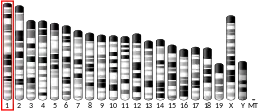| NMNAT2 | |||||||||||||||||||||||||||||||||||||||||||||||||||
|---|---|---|---|---|---|---|---|---|---|---|---|---|---|---|---|---|---|---|---|---|---|---|---|---|---|---|---|---|---|---|---|---|---|---|---|---|---|---|---|---|---|---|---|---|---|---|---|---|---|---|---|
| Identifiers | |||||||||||||||||||||||||||||||||||||||||||||||||||
| Aliases | NMNAT2, C1orf15, PNAT2, nicotinamide nucleotide adenylyltransferase 2 | ||||||||||||||||||||||||||||||||||||||||||||||||||
| External IDs | OMIM: 608701 MGI: 2444155 HomoloGene: 75037 GeneCards: NMNAT2 | ||||||||||||||||||||||||||||||||||||||||||||||||||
| |||||||||||||||||||||||||||||||||||||||||||||||||||
| |||||||||||||||||||||||||||||||||||||||||||||||||||
| |||||||||||||||||||||||||||||||||||||||||||||||||||
| |||||||||||||||||||||||||||||||||||||||||||||||||||
| |||||||||||||||||||||||||||||||||||||||||||||||||||
| Wikidata | |||||||||||||||||||||||||||||||||||||||||||||||||||
| |||||||||||||||||||||||||||||||||||||||||||||||||||
Nicotinamide mononucleotide adenylyltransferase 2 (NMNAT2) is an enzyme that in humans is encoded by the NMNAT2 gene.[5][6][7]
This gene product belongs to the nicotinamide-nucleotide adenylyltransferase (NMNAT) enzyme family, members of which catalyze an essential step in the nicotinamide adenine dinucleotide (NAD+ (NADP)) biosynthetic pathway. NMNAT2 is cytoplasmic (associated with the Golgi apparatus),[8] and is predominantly expressed in the brain. Two transcript variants encoding different isoforms have been found for this gene.[7]
Loss of NMNAT2 initiates Wallerian degeneration.[9] By contrast, NMNAT2 enhancement opposes the actions of SARM1 which would lead to axon degeneration,[10] but this effect is not due to preventing SARM1 depletion of NAD+.[9] Mice lacking NMNAT2 die before birth,[11] but are completely rescued by SARM1 deletion.[12] Activation of NMNAT2 by Sirtuin 3 (SIRT3) may be a means of inhibiting axon degeneration and dysfunction.[13]
The catechin epigallocatechin gallate (EGCG) found in tea can activate NMNAT2 by more than 100%.[14]
References
- 1 2 3 GRCh38: Ensembl release 89: ENSG00000157064 - Ensembl, May 2017
- 1 2 3 GRCm38: Ensembl release 89: ENSMUSG00000042751 - Ensembl, May 2017
- ↑ "Human PubMed Reference:". National Center for Biotechnology Information, U.S. National Library of Medicine.
- ↑ "Mouse PubMed Reference:". National Center for Biotechnology Information, U.S. National Library of Medicine.
- ↑ Sood R, Bonner TI, Makalowska I, Stephan DA, Robbins CM, Connors TD, Morgenbesser SD, Su K, Faruque MU, Pinkett H, Graham C, Baxevanis AD, Klinger KW, Landes GM, Trent JM, Carpten JD (Apr 2001). "Cloning and characterization of 13 novel transcripts and the human RGS8 gene from the 1q25 region encompassing the hereditary prostate cancer (HPC1) locus". Genomics. 73 (2): 211–22. doi:10.1006/geno.2001.6500. PMID 11318611.
- ↑ Raffaelli N, Sorci L, Amici A, Emanuelli M, Mazzola F, Magni G (Oct 2002). "Identification of a novel human nicotinamide mononucleotide adenylyltransferase". Biochem Biophys Res Commun. 297 (4): 835–40. doi:10.1016/S0006-291X(02)02285-4. PMID 12359228.
- 1 2 "Entrez Gene: NMNAT2 nicotinamide nucleotide adenylyltransferase 2".
- ↑ Cambronne XA, Kraus WL (2020). "Location, Location, Location: Compartmentalization of NAD + Synthesis and Functions in Mammalian Cells". Trends in Biochemical Sciences. 45 (10): 858–873. doi:10.1016/j.tibs.2020.05.010. PMC 7502477. PMID 32595066.
- 1 2 Brazill JM, Li C, Zhu Y, Zhai RG (2017). "NMNAT: It's an NAD + Synthase… It's a Chaperone… It's a Neuroprotector". Current Opinion in Genetics & Development. 44: 156–162. doi:10.1016/j.gde.2017.03.014. PMC 5515290. PMID 28445802.
- ↑ Sasaki Y, Nakagawa T, Mao X, DiAntonio A, Milbrandt J (October 2016). "+ depletion". eLife. 5. doi:10.7554/eLife.19749. PMC 5063586. PMID 27735788.
- ↑ Yaku K, Okabe K, Nakagawa T (2018). "NAD metabolism: Implications in aging and longevity". Ageing Research Reviews. 47: 1–17. doi:10.1016/j.arr.2018.05.006. PMID 29883761. S2CID 47002665.
- ↑ Gilley J, Ribchester RR, Coleman MP (October 2017). "S, Confers Lifelong Rescue in a Mouse Model of Severe Axonopathy". Cell Reports. 21 (1): 10–16. doi:10.1016/j.celrep.2017.09.027. PMC 5640801. PMID 28978465.
- ↑ Zhang J, Xiang H, Rong-Rong He R, Liu B (2020). "Mitochondrial Sirtuin 3: New emerging biological function and therapeutic target". Theranostics. 10 (18): 8315–8342. doi:10.7150/thno.45922. PMC 7381741. PMID 32724473.
- ↑ Rajman L, Chwalek K, Sinclair DA (2018). "Therapeutic Potential of NAD-Boosting Molecules: The In Vivo Evidence". Cell Metabolism. 27 (3): 529–547. doi:10.1016/j.cmet.2018.02.011. PMC 6342515. PMID 29514064.
Further reading
- Seki N, Ohira M, Nagase T, et al. (1998). "Characterization of cDNA clones in size-fractionated cDNA libraries from human brain". DNA Res. 4 (5): 345–9. doi:10.1093/dnares/4.5.345. PMID 9455484.
- Strausberg RL, Feingold EA, Grouse LH, et al. (2003). "Generation and initial analysis of more than 15,000 full-length human and mouse cDNA sequences". Proc. Natl. Acad. Sci. U.S.A. 99 (26): 16899–903. Bibcode:2002PNAS...9916899M. doi:10.1073/pnas.242603899. PMC 139241. PMID 12477932.
- Yalowitz JA, Xiao S, Biju MP, et al. (2004). "Characterization of human brain nicotinamide 5'-mononucleotide adenylyltransferase-2 and expression in human pancreas". Biochem. J. 377 (Pt 2): 317–26. doi:10.1042/BJ20030518. PMC 1223862. PMID 14516279.
- Gerhard DS, Wagner L, Feingold EA, et al. (2004). "The status, quality, and expansion of the NIH full-length cDNA project: the Mammalian Gene Collection (MGC)". Genome Res. 14 (10B): 2121–7. doi:10.1101/gr.2596504. PMC 528928. PMID 15489334.
- Berger F, Lau C, Dahlmann M, Ziegler M (2006). "Subcellular compartmentation and differential catalytic properties of the three human nicotinamide mononucleotide adenylyltransferase isoforms". J. Biol. Chem. 280 (43): 36334–41. doi:10.1074/jbc.M508660200. PMID 16118205.
- Gregory SG, Barlow KF, McLay KE, et al. (2006). "The DNA sequence and biological annotation of human chromosome 1". Nature. 441 (7091): 315–21. Bibcode:2006Natur.441..315G. doi:10.1038/nature04727. PMID 16710414.
- Sorci L, Cimadamore F, Scotti S, et al. (2007). "Initial-rate kinetics of human NMN-adenylyltransferases: substrate and metal ion specificity, inhibition by products and multisubstrate analogues, and isozyme contributions to NAD+ biosynthesis". Biochemistry. 46 (16): 4912–22. doi:10.1021/bi6023379. PMID 17402747.




